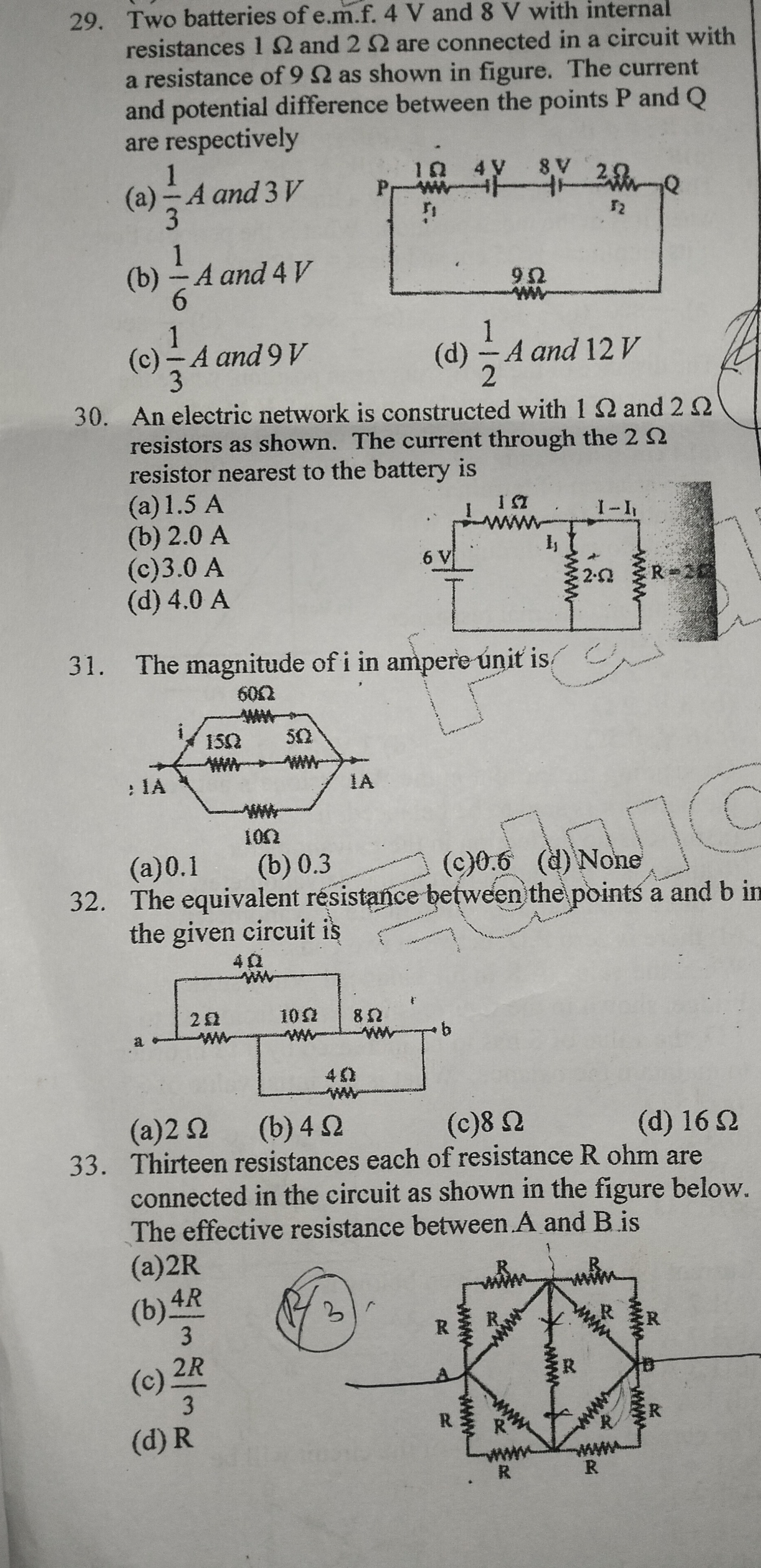Question
Question: Two batteries of e.m.f. 4 V and 8 V with internal resistances 1 $\Omega$ and 2 $\Omega$ are connecte...
Two batteries of e.m.f. 4 V and 8 V with internal resistances 1 Ω and 2 Ω are connected in a circuit with a resistance of 9 Ω as shown in figure. The current and potential difference between the points P and Q are respectively

31A and 3 V
61A and 4 V
31A and 9 V
21A and 12 V
31A and 3 V
Solution
We are given a two-branch circuit between P and Q. One branch consists of a series combination of a 1 Ω resistor, a 4 V battery and an 8 V battery and a 2 Ω resistor.
A common method is as follows:
-
Denote the potential difference between P and Q by V.
-
In the battery branch the net drop is
V = (net emf) – (current × total resistance)
Here the net emf (taken in the proper sign‐convention) comes out as 4 V – 8 V = –4 V. (One may choose the sign so that eventually the answer is positive.)
-
Thus writing
V = 4 – 8 – (1+2) I ⟹ V = –4 – 3I (1)
-
In the 9 Ω branch, by Ohm’s law, V = 9 I (2)
Equate (1) and (2):
9 I = –4 – 3I ⟹ 12 I = –4 ⟹ I = –1/3 A.
The minus sign means that our assumed direction was opposite to the actual one. In magnitude the answer is
I = 1/3 A and the potential difference (magnitude) is V = 9×(1/3) = 3 V.
Thus one acceptable answer is:
Current = 1/3 A and V₍PQ₎ = 3 V.
